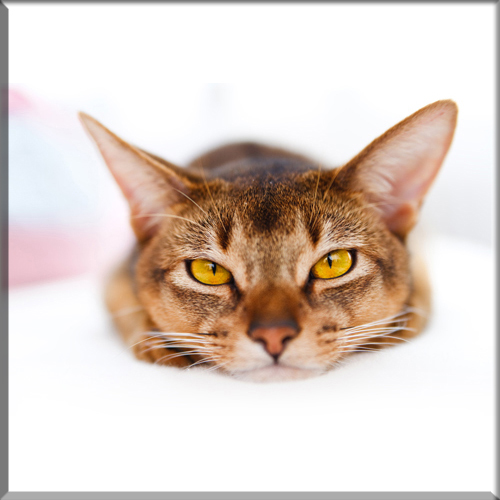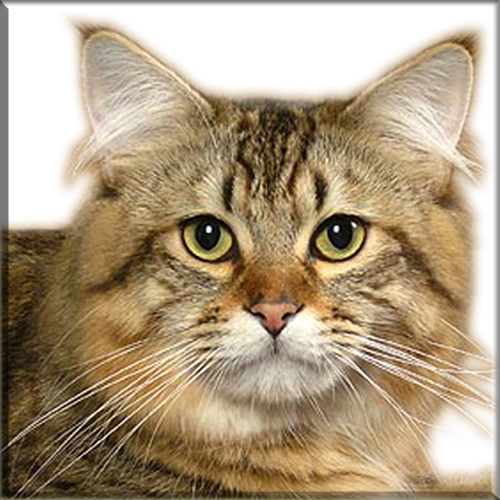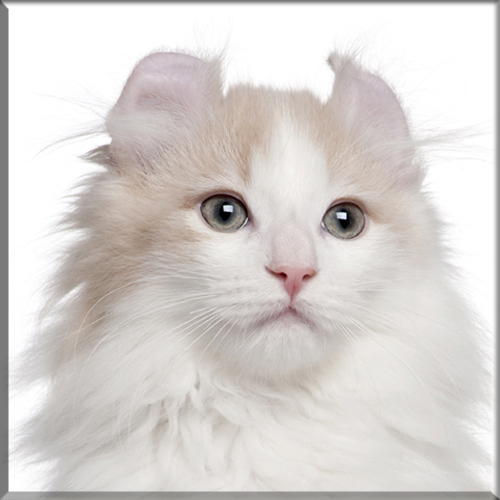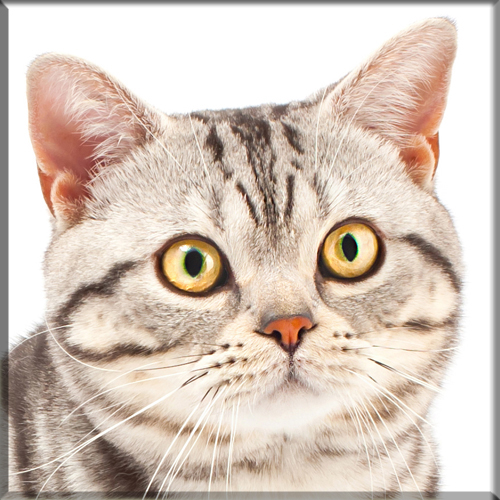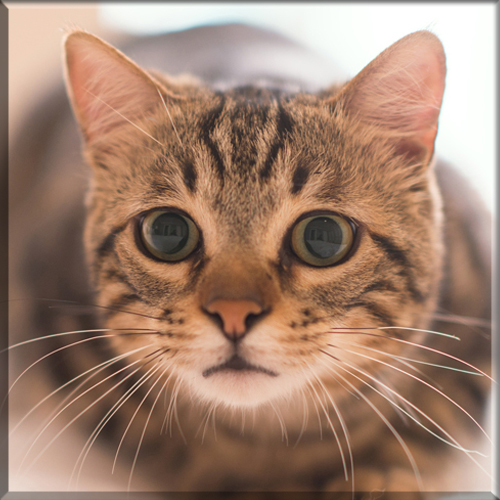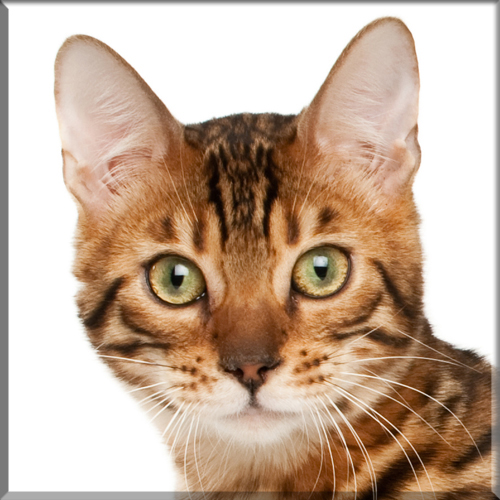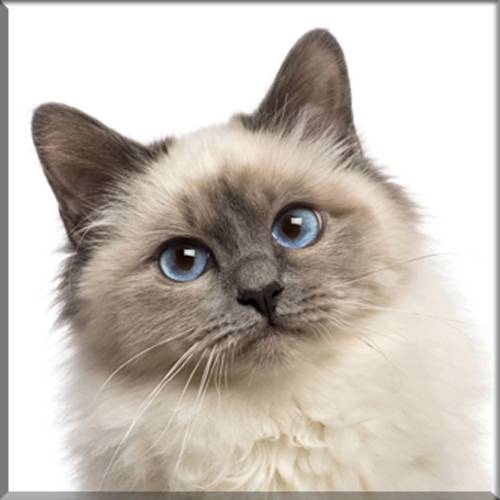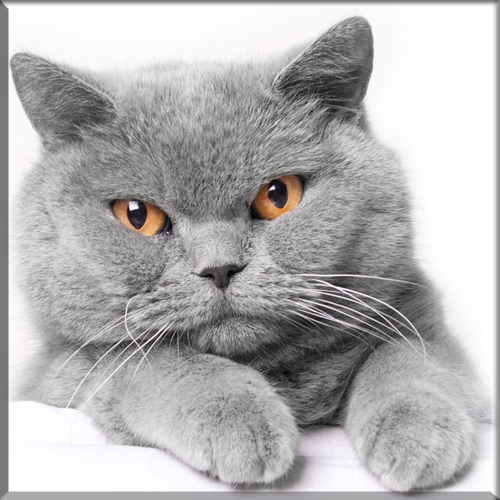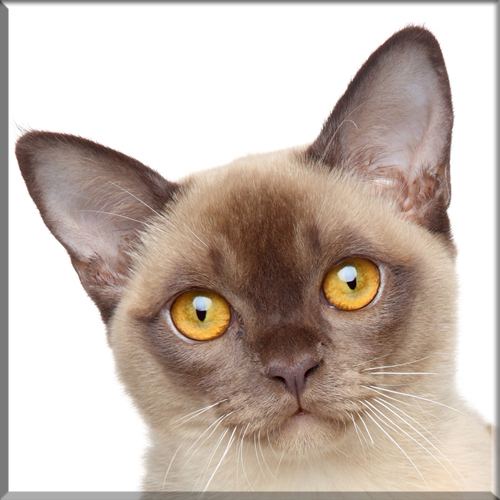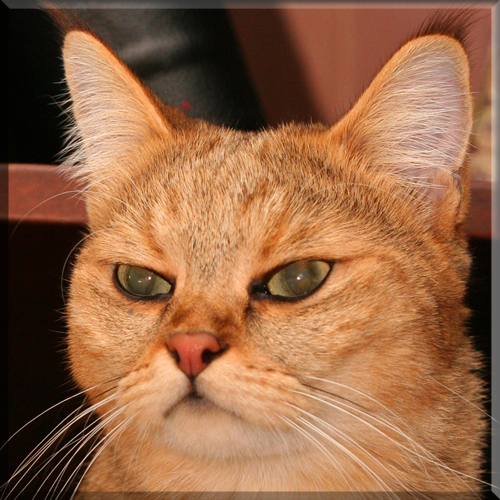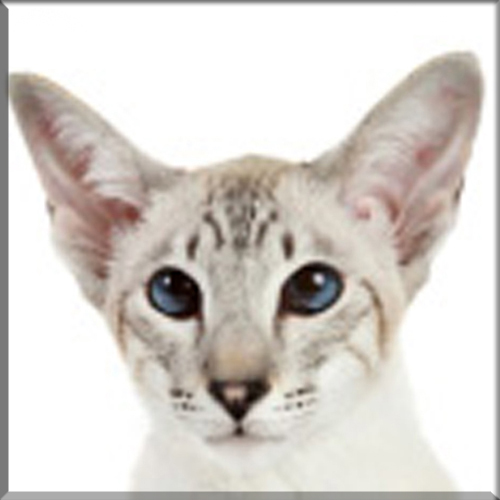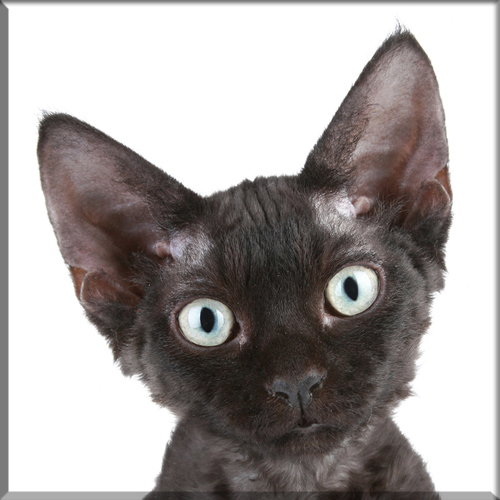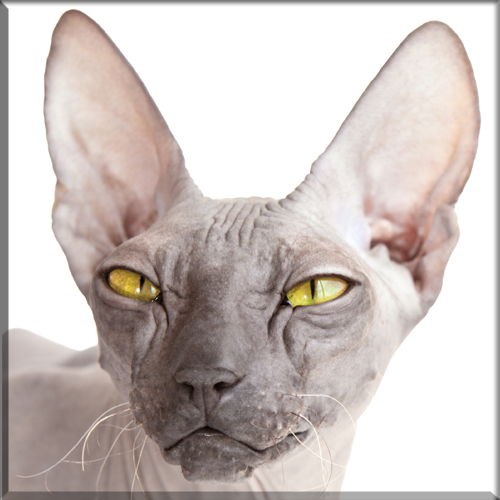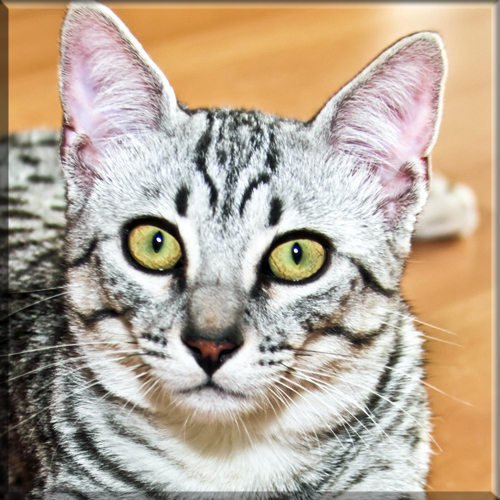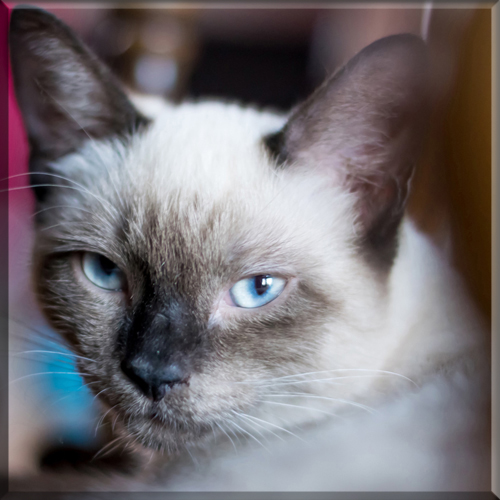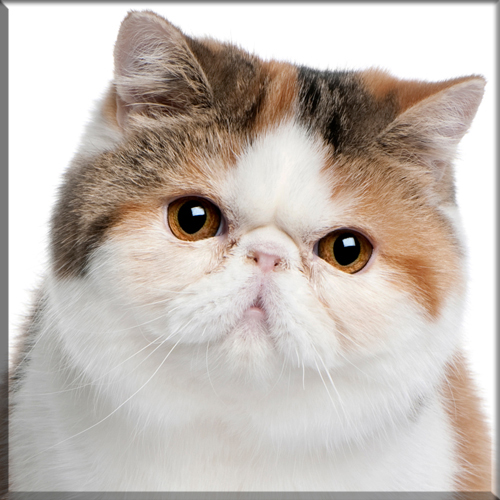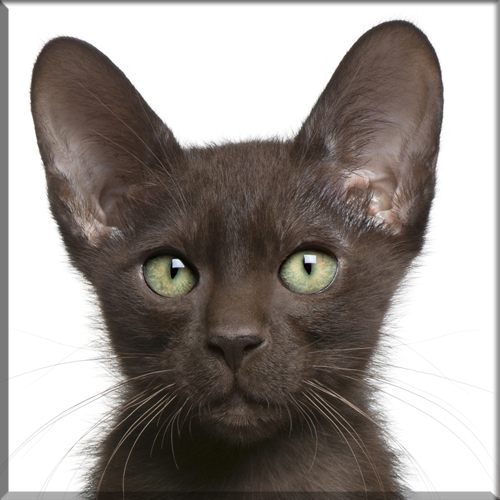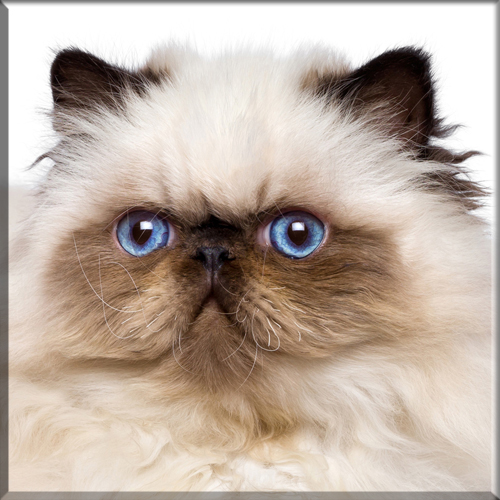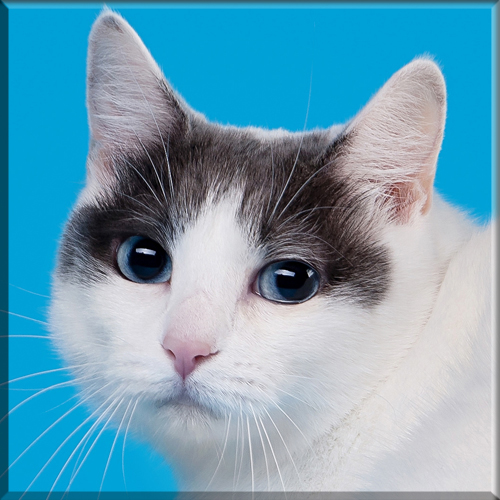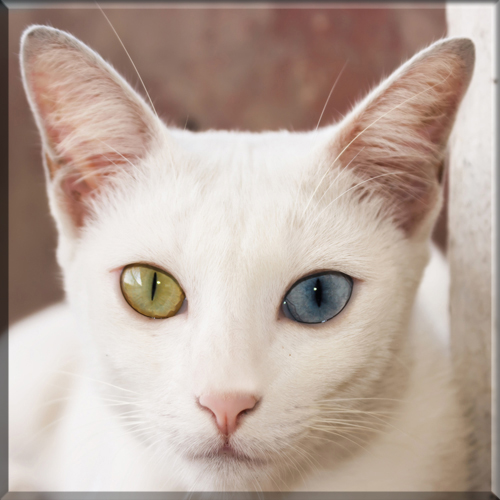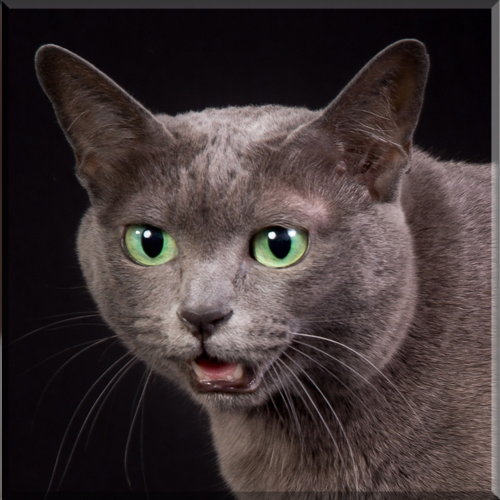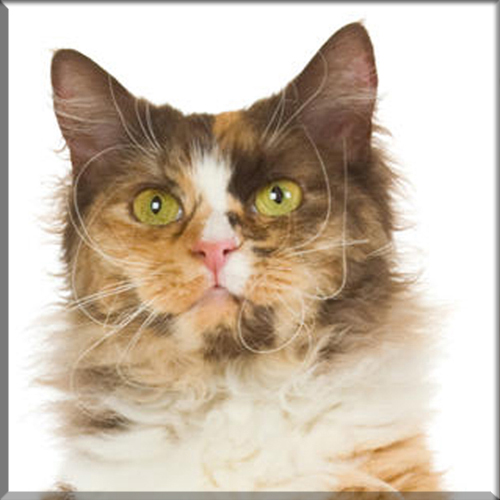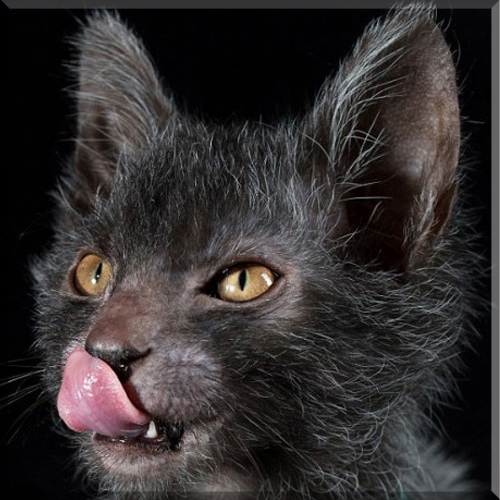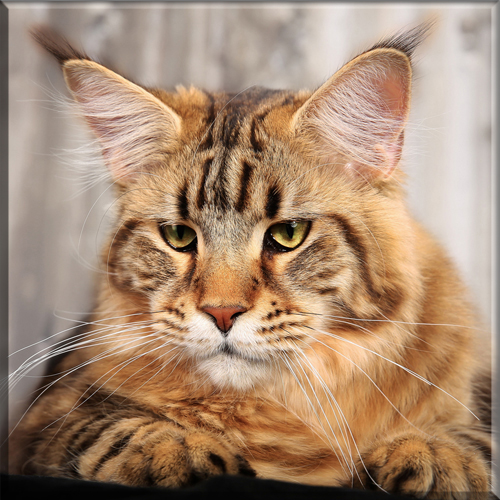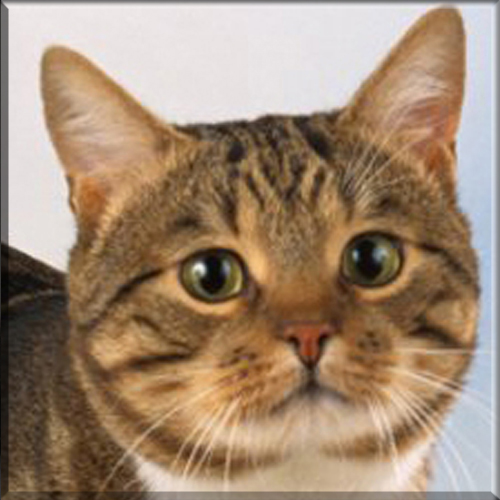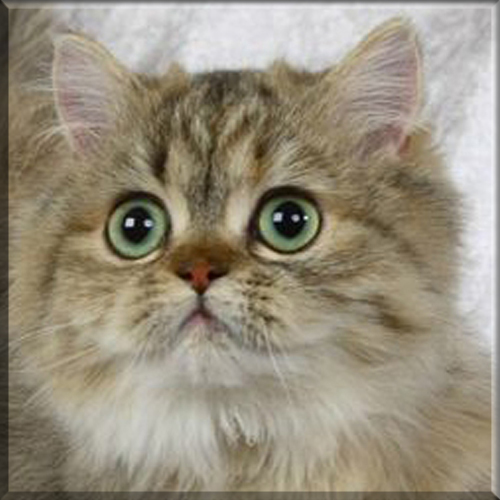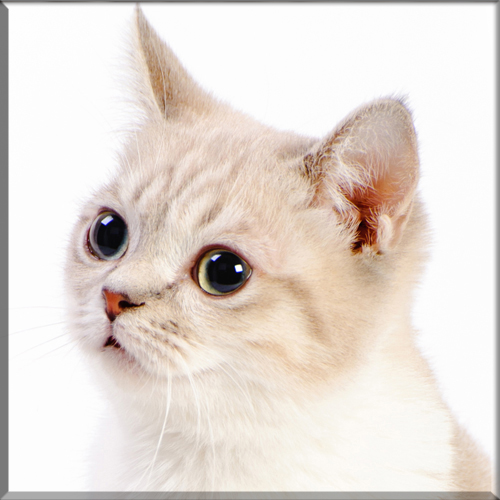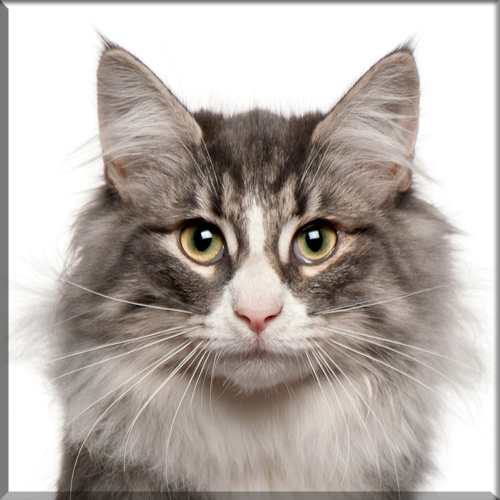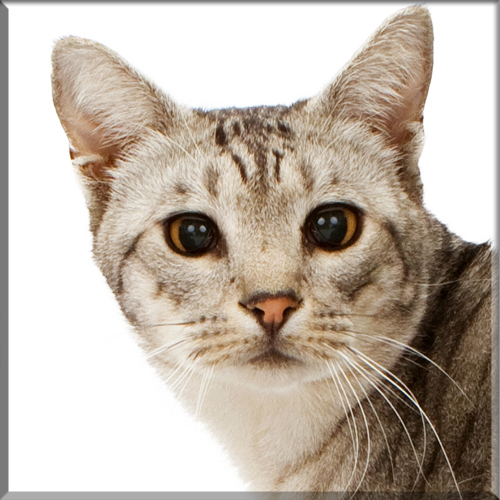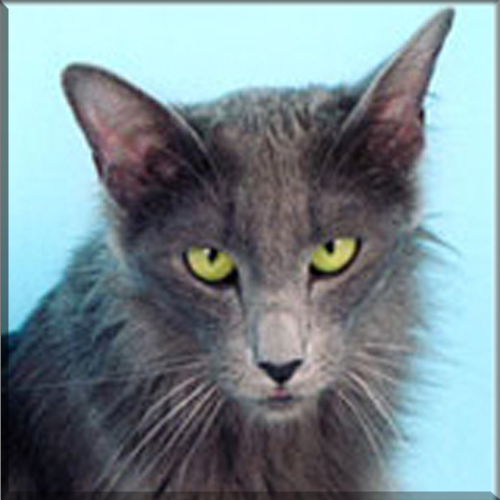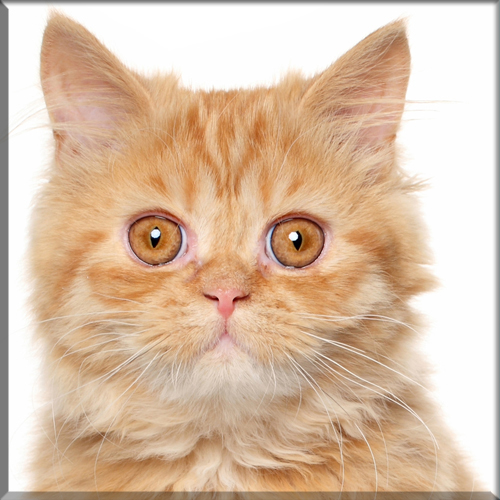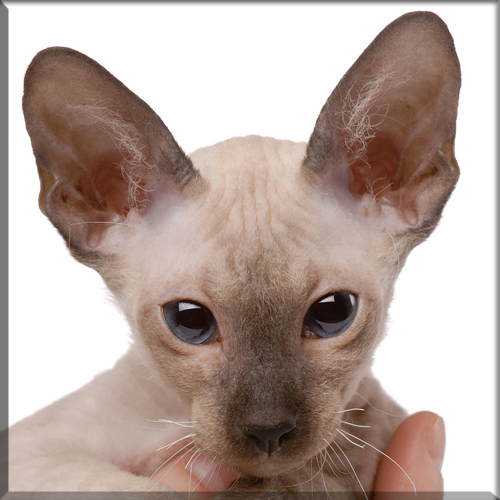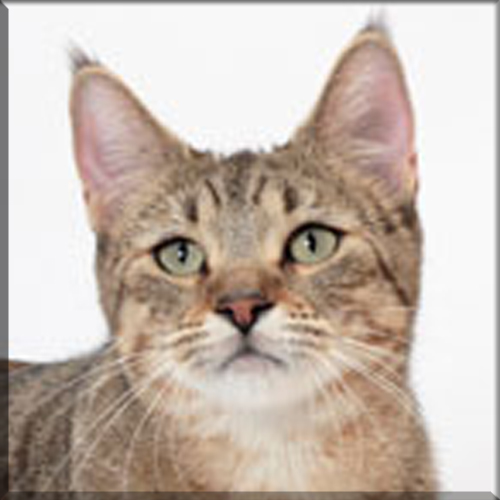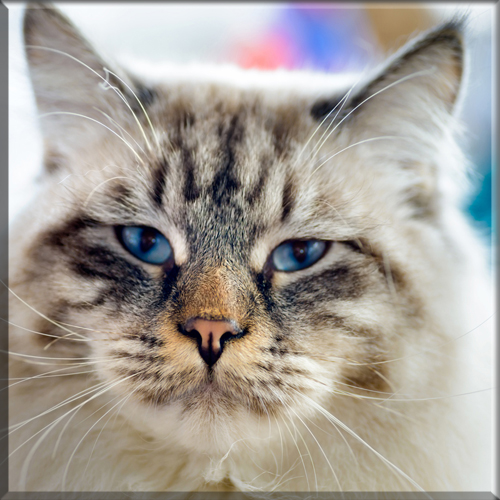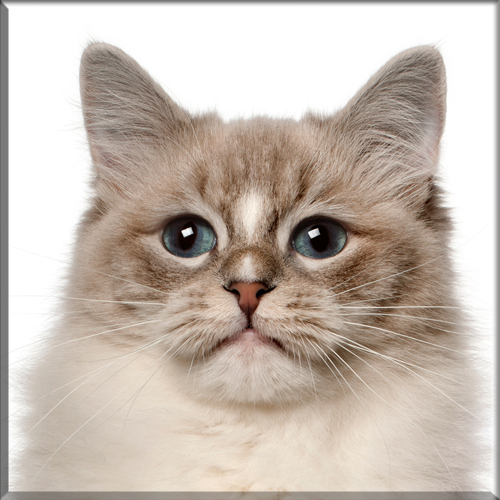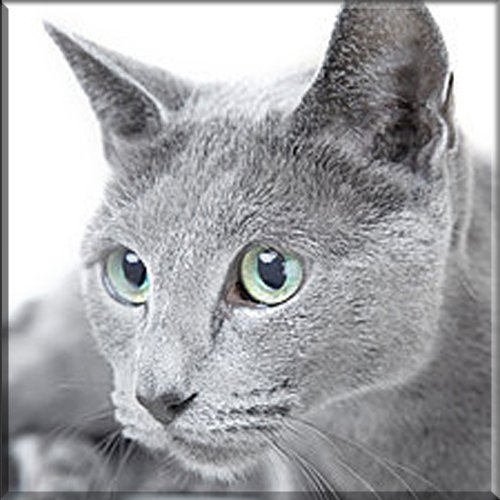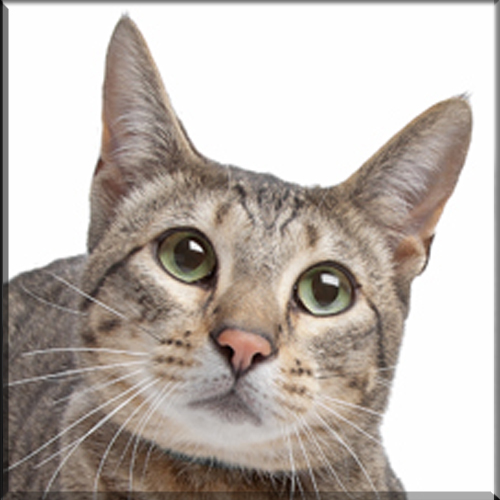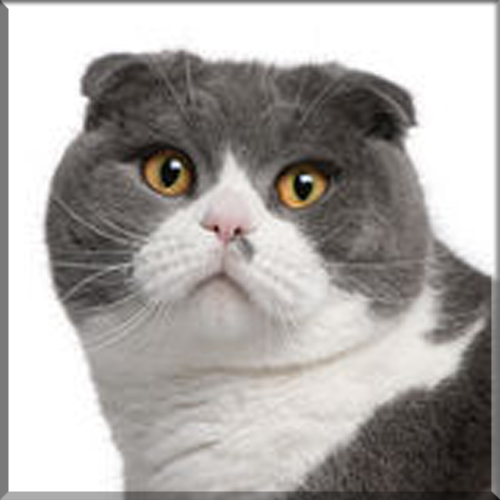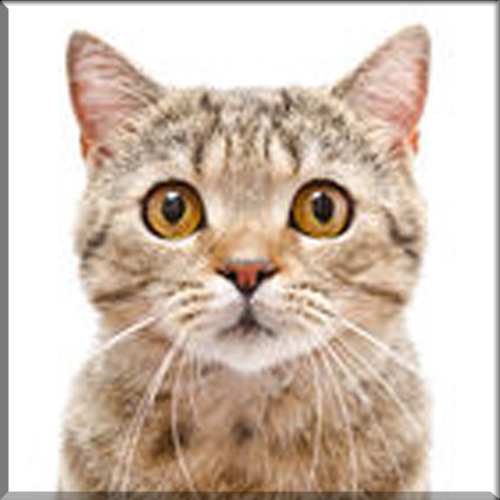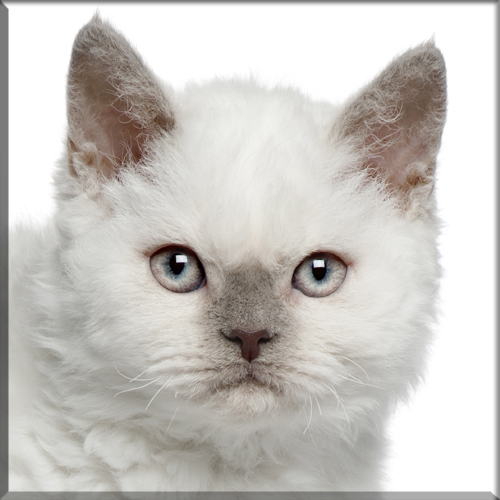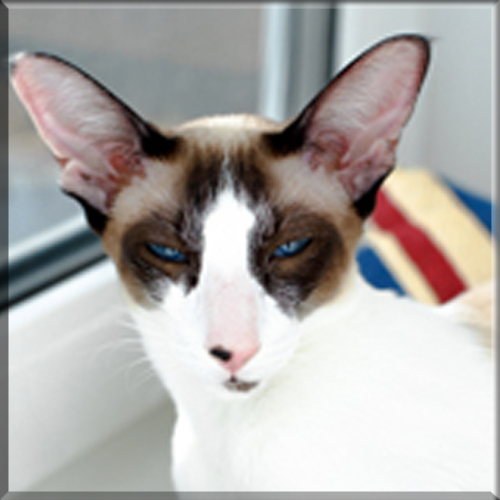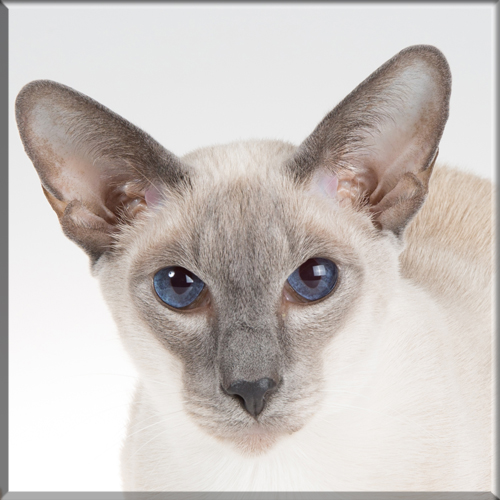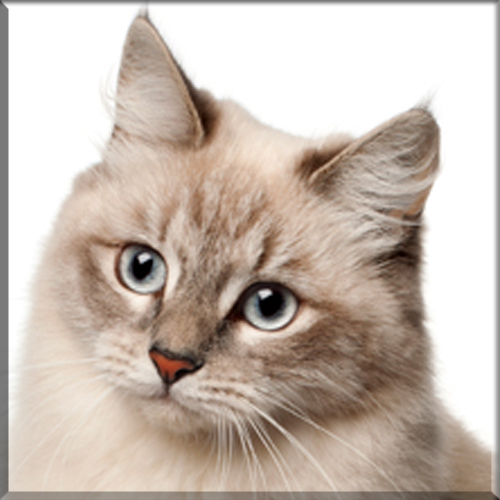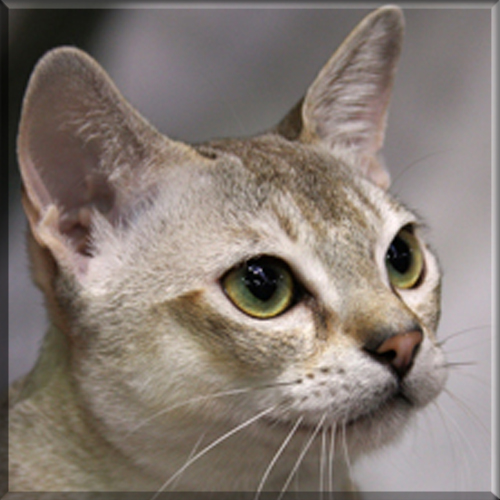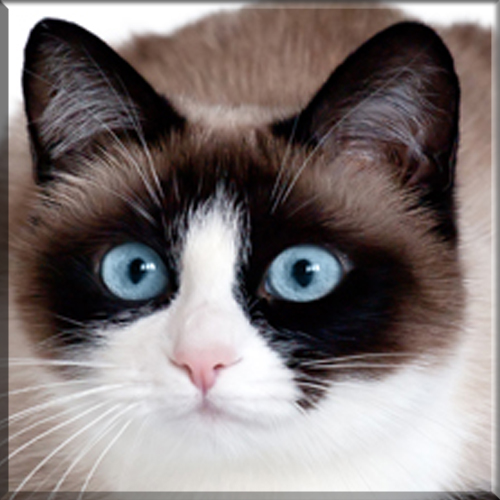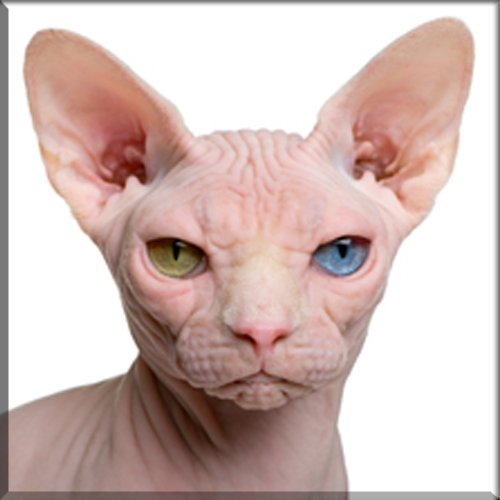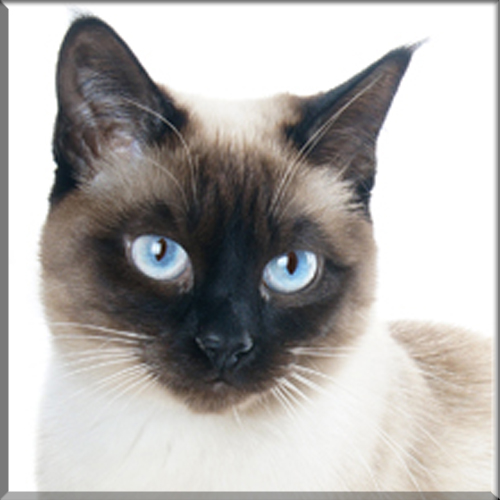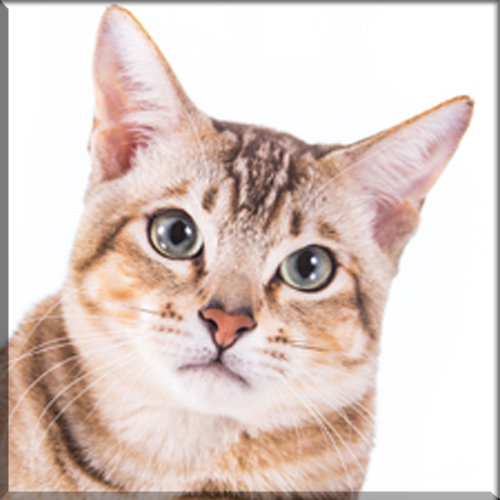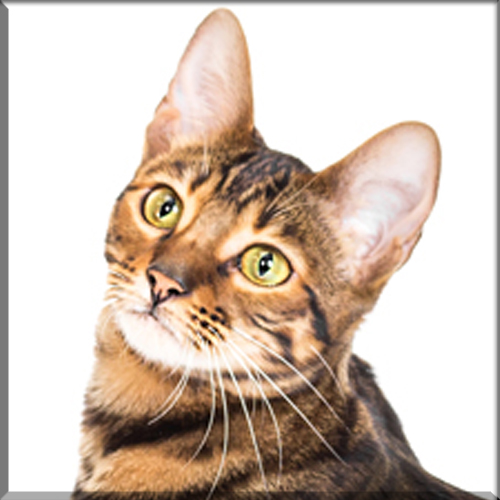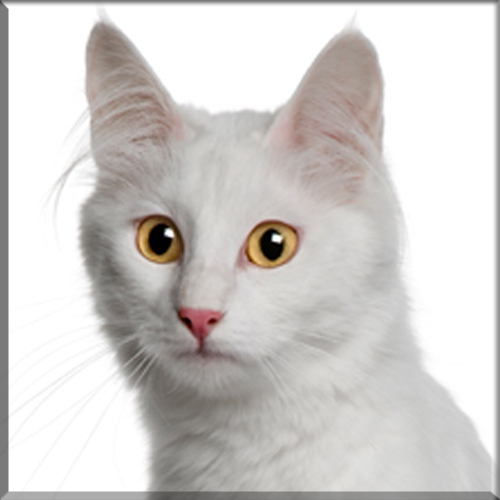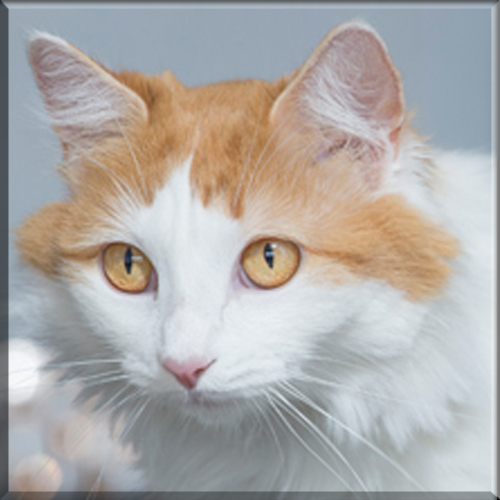European Burmese
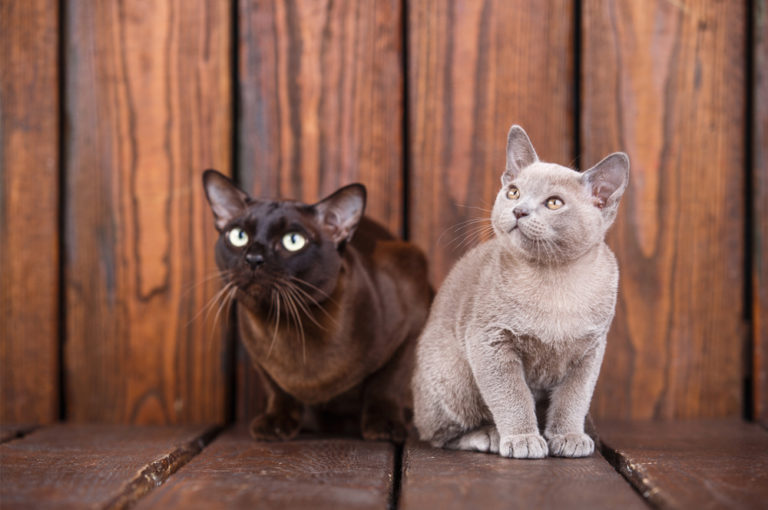
Appearance and features:
The two standards differ mainly in head and body shape. The British or traditional ideal tends toward a more slender, long-bodied cat with a wedge-shaped head, large pointed ears, long tapering muzzle and moderately almond-shaped eyes. The legs should likewise be long, with neat oval paws. The tail tapers to medium length. The American (also called “contemporary”) Burmese is a noticeably stockier cat, with a much broader head, round eyes and distinctively shorter, flattened muzzle; the ears are wider at the base. Legs and tail should be proportionate to the body, medium-length, and the paws also rounded.
Size:
European Burmese are a small to medium size breed, tending to be about 8-12 pounds, but are nevertheless substantially-built, muscular cats and should feel heavy for their size when held — “brick wrapped in silk”.
Family:
The Burmese cats are originally a crossbreed between a Siamese and Burmese type.
Coloring:
While the Burmese original coloring was a seal sepia, or sable, with a rich, short, glossy dark brown coat, they now come in a variety of other colors (not yet recognized in All associations) from a warm blue to a pinky-grey lilac to a soft chocolate, platinum, or tortie colors. These newer colors are rapidly becoming as popular as the original sable brown.
Origin:
In 1871, Harrison Weir organised a cat show at the Crystal Palace. A pair of Siamese cats were on display that closely resembled modern American Burmese cats in build, thus probably similar to the modern Tonkinese breed. The first attempt to deliberately develop the Burmese in the late 19th century in Britain resulted in what were known as Chocolate Siamese rather than a breed in their own right; this view persisted for many years, encouraging crossbreeding between Burmese and Siamese in an attempt to more closely conform to the Siamese build. The breed thus slowly died out in Britain.[1]
Dr. Joseph Cheesman Thompson imported Wong Mau, a brown female cat, into San Francisco in 1930. Dr Thompson considered the cat’s build to be sufficiently different from the Siamese to still have potential as a fully separate breed. Wong Mau was bred with Tai Mau, a seal point Siamese, and then bred with her son to produce dark brown kittens that became the foundation of a new, distinctive strain of Burmese. In 1936, the Cat Fanciers’ Association (CFA) granted the breed formal recognition. However, due to continued extensive outcrossing with Siamese cats to increase the population, the original type was overwhelmed, and the CFA suspended breed recognition a decade later. Attempts by various American breeders to refine the unique Burmese standard persisted, however, and in 1954, the CFA lifted the suspension permanently. In 1958, the United Burmese Cat Fanciers (UBCF) compiled an American judging standard which has remained essentially unchanged since its adoption. Historically, the two versions of the breed were kept strictly distinct genetically. British Burmese (also known as “traditional”) were declassed as a breed by the CFA in the 1980s. The GCCF banned the registration of all Burmese imported from America in order to preserve the “traditional” bloodlines. Most modern cat registries do not formally recognize these dual standards as representing separate breeds, but those that do refer to the British type as the European Burmese.[4] Recently, the International Cat Association (TICA) and CFA clubs have started using the American breed standard at select shows in Europe.
Temperament:
Burmese are very sweet-natured people-arranged breed, industriously vocal, keeping up their kitten like energy into adulthood. Burmese are social felines who flourish with the friendship of their family or different pets. So if you have a busy family, and you will away for extensive stretches of time, you should need to consider two so they will be company for each another. Profoundly wise, Burmese frequently figure out how to follow commands, such as, ‘fetch’ and ‘tag. Therefore, it is best to provide him with riddle toys that will compensate him with kibble or treats when he figures out how to control them.
Health concerns:
Burmese cats in Europe and Australia are at increased risk of diabetes mellitus compared to other breeds. American Burmese do not share this increased risk, due to the genetic differences between American Burmese and other Burmese. Also known to be effected by cranial distortions, glaucoma or cat hyperesthesia disorder, which results in an expanded affectability to contact or excruciating improvements. They may likewise be inclined to calcium oxalate stones in the urinary tract.
Breed Characteristics
Here is a helpful guide for the different characteristics of the breed. On a Scale of 1-5. 1 being very low level to 5 being high level.
Hypoallergenic: No
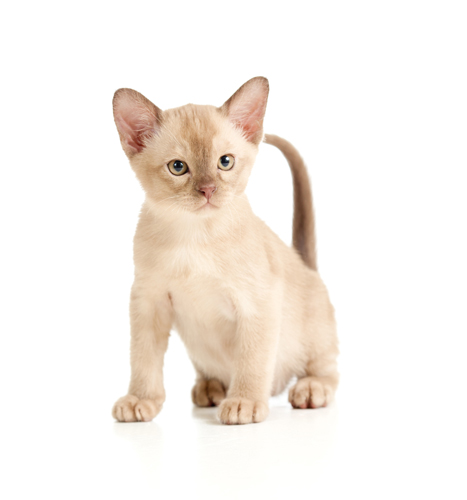
Breeders With Currently Available Kittens
All The Cat Breeds
- Abyssinian
- American Bobtail
- American Curl
- American Shorthair
- American Wirehair
- Balinese
- Bengal
- Birman
- Bombay
- British Shorthair
- Burmese
- Burmillia
- Charteux
- Chausie
- Colorpoint Shorthair
- Cornish Rex
- Devon Rex
- Donskoy
- Egyption Mau
- European Burmese
- Exotic
- Havana Brown
- Highlander
- Himalayan
- Japanese Bobtail
- Khao Manee
- Korat
- LaPerm
- Lykoi
- Maine Coon
- Manx
- Minuet / Napolean
- Munchkin
- Norwegian Forest Cat
- Ocicat
- Oriental Longhair
- Oriental Shorthair
- Persian
- Peterbald
- Pixie Bob
- Ragamuffin
- Ragdoll
- Russian Blue
- Savannah
- Scottish Fold
- Scottish Straight
- Selkirk Rex
- Seychellois
- Siamese
- Siberian
- Singapora
- Snowshoe
- Somali
- Sphynx
- Thai
- Tonkinese
- Toyger
- Turkish Angora
- Turkish Van

